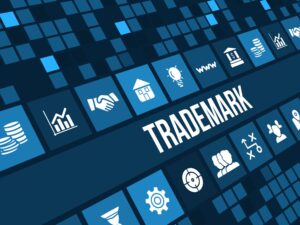United States Trademarks
To talk about trademark infringement, we first must address what a trademark is. A trademark can be any word, phrase, symbol, design, or combination of these things that are used to identify goods or services. For example, the word mark “Apple” for a computer. A trademark identifies the sources of your goods or services, provides legal protection for a brand, and helps guard against counterfeiting and fraud. It also protects against confusingly similar marks from entering the marketplace and confusing consumers as to the source or origin of goods.
The Importance of Trademarks
Trademarks are a significant source of a brand’s value as they provide a property right that can continue to protect a brand from other similar uses for as long as that trademark is used in commerce. Trademark rights are granted on a first-in-time, highest-in-right basis. This means that the first to use a mark in commerce has a trademark that is granted superior protection above and beyond all confusingly similar marks that are used in commerce afterward. With a trademark, you can stop other people from using their similar marks, even if they aren’t exactly identical.
This first-to-use trademark system in the United States is different from most of the rest of the world, where the first to register for a trademark has the right to the trademark, even if someone else is already using it.
Protection Provided by Trademarks
Trademarks provide protection in a variety of areas, including protection from other marks that are similar in sight, sound, or meaning. For example, a senior mark in English could potentially have superior rights to another use of the same word spelled in another language, like Spanish, because they have the same meaning. This is true even though the marks do not appear or sound the same because they have the same meaning. Similarly, a mark that sounds or looks the same, but is spelled differently could still infringe on the mark that was used in commerce first. For example, the mark “Praise” could be deemed to infringe on a prior used mark “Praze” because the two are so similar in sound and sight. Simply changing a mark’s spelling does not mean you are protected from trademark infringement liability.
Levels of Trademark Protection
U.S. trademarks are ranked on a range of protectability, including generic, descriptive, suggestive, arbitrary, and fanciful. Generic marks are not granted protection as a trademark because they are needed to describe the actual name of a product. For example, “Hot Dog Stand” for a hot dog stand. The mark “Hot Dog Stand” would not receive protection for this purpose.
Conversely, fanciful marks are granted the highest level of protection because they are completely made-up terms that are used to identify a product or service. For example, “Sidexicon” for a restaurant. The mark is a made-up word, and it has nothing to do with food or restaurants.
Trademark Infringement
Trademark infringement in the United States occurs when someone uses a trademark in connection with the sale or advertising of goods or services that is likely to cause consumer confusion or mistake about the source of the goods or services. This confusion normally happens when the marks are so similar in sight, sound, or meaning that people are likely to wrongly believe that one brand is associated with another. Brand names that are deceptively similar to other brand names are said to be infringing on the trademark of the senior user in the marketplace.
Likelihood of Confusion Analysis
Courts determine whether trademark infringement occurred with the “likelihood of confusion” analysis. The factors used by courts to determine if consumers are likely to be confused include:
- The strength of the trademark on the spectrum of protectability mentioned above
- The similarity of the marks
- The relatedness of the goods and services
- The potential that the senior user could expand into the market of the junior user
- The similarity of trade channels and consumers
- The defendant’s intent in adopting the mark
- The sophistication of potential purchasers
- The quality of the allegedly infringing goods or services
Likelihood of confusion means a probability of confusion, and not merely a possibility of confusion.
When finding an infringement has occurred, courts can order injunctive relief, monetary damages, a disgorgement of profits, and an order to pay the plaintiff’s attorneys’ fees in exceptional cases.
Likelihood of Confusion Analysis in Action
The “likelihood of confusion” analysis is a complex process used by U.S. courts to determine if trademark infringement has occurred. Courts weigh several factors, and the relative importance of each factor can vary depending on the specific case. Here are some examples to illustrate how these factors might be applied:
Strength of the Trademark
A strong, distinctive trademark like “Apple” for computers enjoys greater protection than a generic or descriptive term like “Red Delicious” for apples. In a hypothetical case, a new computer company called “Apricot” might be found to infringe on “Apple” because both are strong marks for similar products, whereas “Wonderful Apple” would not likely be found to infringe.
Similarity of the Marks
This considers how similar the sights, sounds, and meanings of the marks are. Courts might find confusion likely if the marks share a common word or spelling, even with slight variations. For example, “Superhero Soap” could infringe on “Superman” due to the similarity in “Super” and the connection to a superhero character. However, “Super Clean” for cleaning supplies might be allowed because the meaning and overall impression are distinct.
Relatedness of Goods and Services
If the goods or services are closely related, even minor similarities in trademarks can cause confusion. For instance, “Chevy” for cars and “Chevy’s Motorcycles” might be confusing because consumers might associate the motorcycles with the car brand. On the other hand, “Chevy’s Lawn Care” would likely be permissible because lawn care services are not related to cars.
These are just a few examples, and courts consider all the relevant factors to reach a decision.
U.S. Trademark Infringement Defenses
Even if a trademark infringement has occurred, there are certain affirmative defenses to which a defendant can avail themselves.
Prior Use Defense
Since trademarks are granted under the principle of first-in-time, highest-in-right, a defendant that can prove they used the mark first in commerce can defeat an action against them for trademark infringement.
Prior Use Hypothetical: A small company called “Rocky Mountain Pies” has been selling huckleberry pies in Montana for 20 years. A large corporation then starts selling a new line of frozen pizzas under the name “Rocky Mountain Pizza.” In this case, “Rocky Mountain Pies” could potentially use the prior use defense to argue that they have superior rights to the term “Rocky Mountain” for food products in their region, even though the pizzas are different from their pies.
Parody Defense
Courts have recognized the First Amendment right permitting certain parodies of trademarks. However, there is a line, and disparagement and harmful marks may still pose a problem for defendants.
Parody Defense Hypothetical: A comedian creates a satirical news show called “The Daily Planet” that uses a similar logo to the fictional newspaper from Superman. As long as the parody is clear and not intended to mislead consumers or tarnish the Superman trademark, the comedian might be able to use the parody defense.
Descriptive Fair Use Defense
This is a defense that basically alleges the mark was used to describe a good or service. Just because a junior mark exactly matches a senior mark does not mean the junior user will be liable for trademark infringement if they are using their mark to fairly describe the attributes of their own product or service.
Descriptive Fair Use Hypothetical: A company sells a generic pain reliever and calls it “Aspirin Free.” Even though “Aspirin” is a registered trademark of Bayer, the “Aspirin Free” name is purely descriptive of the product’s lack of aspirin and might not be considered infringement.
Nominative Use Defense
Nominative use is when one brand mentions another brand through comparative advertising. The trademark is mentioned in a way that helps distinguish two brands, rather than to create some association between the two brands. Courts often look to whether another’s trademark falsely suggested that there was an endorsement or sponsorship.
Nominative Use Hypothetical: Imagine a consumer electronics review website mentions the latest “iPhone” model from Apple in a comparison review alongside other smartphones. This would likely be deemed a nominative use because the website is simply identifying the product it is reviewing, and not trying to imply an endorsement or affiliation with Apple.
Trademark Abandonment Defense
If the senior user stopped using their mark in the marketplace and lacked the intent to continue using it, they will be unable to enforce their previous rights in the mark because they will be said to have abandoned their trademark rights.
Trademark Abandonment Hypothetical: A company once had a popular brand of sneakers called “AirJump” (with a shoe symbol replacing the “o”). However, they haven’t sold these sneakers in over ten years and haven’t shown any intent in resuming production. If another company now tries to register “AirJump” for sneakers, they might be able to do so because the original owner seems to have abandoned the trademark.
Conclusion
To avoid being sued for trademark infringement, it is important that you research existing United States trademarks before you start using your mark in the marketplace. Your goal with this research is to make certain nobody else is already using your mark, and to thereby reduce your risk of being sued for infringement.
These trademark clearance searches, as they are called, are best done by an experienced United States trademark attorney, who can search through the records and analyze the possibility of consumer confusion between the mark you intend to use, and the marks others are already using in the marketplace. If the mark you wish to use is already in use, the best advice is usually to find another trademark—particularly before you invest time and money in a mark that will bring you expensive legal trouble down the road. The best time to make a change in branding is at the beginning of your venture when you have the ability to consider a wide range of marks and pick the one that is least likely to cause liability for trademark infringement.
To minimize your risk of a trademark infringement lawsuit, conduct a thorough trademark clearance search with an experienced attorney. Their guidance can ensure your brand is legally protected and minimize confusion with existing marks.
























